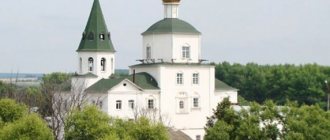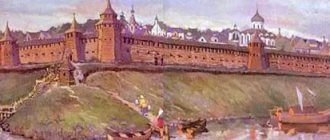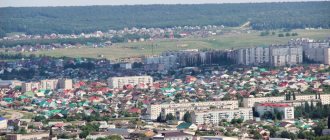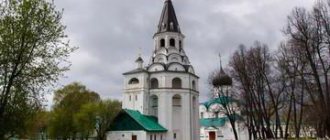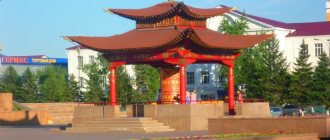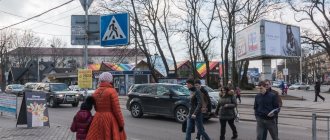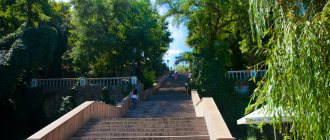- Reports and messages
- Miscellaneous
- Kurgan city
Kurgan is a city founded in 1553, located on the Tobol River and bordering Kazakhstan.
Until the 17th century, it was a military settlement. But in the 18th century, due to shifting state borders, it no longer made sense to station troops here; the city received civil status and its modern name. The population currently is about 350 thousand people. The impetus for the significant economic growth of Kurgan was the construction of the Trans-Siberian Railway through it. The telegraph, telephone, electricity, and cinema began to appear. And after receiving the status of a regional center in 1943, the city began to develop even more rapidly. Currently, Kurgan is a major administrative, cultural, business and industrial center. Kurgan is divided into seven districts: Energetiki, Western, Central, Zaozerny, Ryabkovsky, Northern and Eastern.
The city is known for its industrial enterprises producing military equipment. The city also produces equipment for agriculture and the oil industry, buses, structures for bridge construction, and produces medicines. Medium and small businesses are focused mainly on the food industry and trade. The well-known Ilizarov Center for Orthopedics and Traumatology operates successfully in Kurgan.
Not many architectural monuments have survived in Kurgan. Most of the buildings were blown up during Soviet times. The most important city symbol is the fire tower. Initially it was the building of the Kurgan Fire Department, and now it is an architectural monument. The local history museum is also of historical value, since previously it was the Alexander Nevsky Church, which was built at the very beginning of the twentieth century. In Kurgan, bourgeois and merchant houses of old times have been preserved. It was in this city that many Decembrists served their exile, among whom were V.K. Kuchelbecker, N.V. Bassargin, M.M. Naryshkin.
Historical data
In 1662, the first settlement called Tsarevo Gorodishche was formed on Tobol. This date is considered to be the beginning of the birth of Kurgan. The settlement remained a settlement until 1782, when Catherine the Second created the Tobolsk governorship and included the city itself and the Kurgan district into its composition. At that time the population reached 1000 people.
At the beginning of its history, Kurgan consisted of three streets with intersections; the city was located in the Ural Federal District. The head, the mayor, controlled everything. There were only three stone houses in the city, several dozen wooden buildings, and there were very few gardens and greenery.
Kurgan is located at a considerable distance from Central Russia , so it was used as a place where Decembrist convicts were exiled. They were educated people and began the development of the city. In 1856, the population of Kurgan increased to 3,500 people, more houses and two churches appeared. Secular society was almost no different from the residents of the capital - women wore fashionable dresses, young people danced square dances.
Later the population doubled and democratic circles appeared. And in 1934, Kurgan was annexed to the Chelyabinsk region. During World War II, many enterprises were evacuated to the city, and entire families from Ukraine and Belarus moved here.
In 1943, the Kurgan region was formed. More than 2,000 collective farms, 478 plants and factories are located on its territory. In 1951, doctor G. Ilizarov developed a device for rapid fusion of bones; the center named after the famous surgeon is still in operation. The city has its own flag - a green and white canvas with the image of two mounds, and a coat of arms.
Option No. 2
It represents the main center of the entire Urals. The city is divided into seven districts. The city is famous for its medical center where Ilizarov once worked; the center was named in his honor. There are many schools, kindergartens and libraries open in the city. There are places to get higher education. The city of Kurgan is located in the center of Eurasia, in the Ural Mountains, there are no seas or oceans nearby. Thanks to this, the city is cold in winter and hot in summer. There are droughts in the area. One of the symbols of the city is the fire tower; it used to house a fire department; now it is considered a monument. At the top of the tower there is a mannequin, whose name is Grisha, he was a prop for training of young firefighters.
The city has twin cities: Rufina (Florence County, Italy) and Appleton (Wisconsin, USA). A house has been opened in the city - a museum of the Decembrists, located in Naryshkin’s house. In it you can learn about the life of the Decembrists in exile.
Climatic conditions
The climate in Kurgan is continental, but heat lovers will find it uncomfortable here. The region has short summers and harsh winters. Snowfalls continue for six months, the average temperature in winter drops to -20 degrees, and on especially cold days it reaches -40. In summer it is no higher than +20, sharp changes are observed. After prolonged heat, severe cold snaps may occur, and vice versa.
There is a wind season in Kurgan , starting in March and lasting almost two months. Due to the unfortunate geographical position, the air stagnates over the area; even eastern currents cannot clear it. Although the city is surrounded by coniferous and birch forests, the atmosphere in it is almost three times dirtier than in neighboring areas.
Most enterprises have switched to natural gas, so they emit fewer harmful substances into the air. There are few roads in the region, their traffic capacity is low, and there are quite a lot of cars.
There are many environmental problems in Kurgan. The Tobol has long become a sewer, and the Black River is also polluted. Local residents scatter garbage on beaches and lakes; spring cleanup days do not allow them to be completely removed.
The environment is deteriorating not only because of the factories; the district administration and city government practically do not care about the cleanliness of the area.
Population diversity
Since 2007, the birth rate in Kurgan and the region has increased and the mortality rate has decreased. Now more than 326,000 people live in the city, a third of which are children and still disabled youth. According to statistics, there are much fewer male residents than female residents - 149.5 and 184 thousand people, respectively.
Multinational population:
- Russians;
- Ukrainians;
- Belarusians;
- other nationalities and peoples.
Young people from Kurgan and nearby towns are patriotic, get an education and want to achieve a lot. Guys and girls have real views on the world, they freely choose their profession and lifestyle. The administration is committed to ensuring the healthy development of the population. In the Trans-Ural region, sports complexes and a children's and youth center have been built, and work is constantly carried out with students.
The labor exchange provides jobs to the population immediately after reaching adulthood. Although some teenagers can receive a salary on the same basis as their parents, making their contribution to the family budget. Interesting fact: emigration of the population has decreased recently - in 2010, 11 thousand residents left, and in 2015 - only 8,000.
Popular message topics
- The work of Oleg Efremov
Speaking about Ivan Antonovich Efremov, it should be said that this man had absolutely encyclopedic knowledge and from this point of view he was the successor of that series of outstanding - Astronomical and calendar seasons
The calendar year includes twelve months. In mid-latitudes, the calendar division of the year into four equal periods is widely used. Almost all states, including Russia, use a calendar, - Personality of Khrushchev
The times from 1953 to 1964 in the history of Russia are called the Khrushchev period, the most important policy and management of the state. This period is associated with the name of N.S. Khrushchev. For some time there was a ban on talking about these
Districts of Kurgan
There are many districts in the Kurgan region. They differ in level of development, population and jobs.
Largest districts:
- Voronovka;
- Oriental;
- Maloe Chausovo;
- West;
- Central;
- Northern;
- Energy;
- Ryabkovo;
- Zaozerny.
The remaining 33 have a meager description: they are smaller, consisting of several short streets. The largest is the Central District, it is located next to the Tobol River. It houses the Drama Theatre, the regional administration, a cinema, the Government building, a road and railway station, a children's park, a museum and a large square named after Lenin. If you move towards the river, you can walk to the Old Kurgan, where there are many interesting buildings. They are real architectural monuments.
Shevelevka is considered the most expensive area. This is a clean and cozy settlement, where there is a health complex, a children's railway, and a park of culture and recreation. The complete opposite of this area is Northern. It’s like a separate city, where there are gray panel houses and the private sector. Here you can buy housing quite cheaply.
The Zaozerny district was so named because it is located beyond Lake Chernoe. So far it is considered one of the most beautiful parts of the region. But the population complains about the poor quality of roads and polluted streets. This is the youngest part of the city - its foundation dates back to 1979. Housing here is cheaper than in the Central District.
To the right of Zaozernoye is Ryabkovo. A scientific center named after Ilizarov was built here, where residents of Russia and other countries come for treatment. This area also has a military hospital, oncology and anti-tuberculosis dispensaries, and an infectious diseases hospital.
Vostochny, which has practically merged with Maly Chausov, is characterized by an increased level of crime. Gypsies live here in old private houses, and panel apartments are sold quite cheaply.
The western district is famous for the monument to tankers, the TV tower and the Hypercity building. On Solnechny Boulevard there are beautiful multi-storey buildings surrounded by short alleys.
Main attractions
Visitors ask local residents about the sights of the city of Kurgan. First of all, you should pay attention to museums, monuments, recreation parks, beaches and restaurants.
There are several first establishments in the region and the city itself:
There are several interesting monuments in the city - to Pavel Vereshchagin, to old technologies. Residents built the latter themselves, using old monitors, system units and keyboards. There are also monuments to tanks, steam locomotives, monuments to Lenin, young parents, and pioneers.
The list of sculptures in the Central Park of Culture and Leisure is also extensive. Visitors will meet here mermaids and Neptune, ancient Russian warriors. Children will love the railway and fountains, and couples can stroll along the lovers' bridge.
In summer, Kurgan residents relax on the Blue Lake beach. In warm weather, you can fish, windsurf, ride a water scooter or boat here. And in winter, children go down the hills on snowboards, skis and sleds. In severe frosts, a pond is covered with a thick layer of ice, which turns it into an ice skating rink.
There are few clubs and bars in Kurgan, but there are restaurants and cafes. Tourists will be able to choose an establishment based on their culinary preferences or budget. You can go to the movies and buy souvenirs in shopping centers.
The provincial town does not particularly stand out among other areas. It has its problems and advantages, beautiful places and polluted areas. There are not enough jobs for everyone, although the Kurgan region is one of the most developed in the industrial sector. Local attractions attract a small number of tourists.
Source
This article briefly summarizes the history of the wonderful city of Kurgan, only basic and interesting facts.
The nomads who attacked the settlement repeatedly ravaged and burned it to the ground, but the city was reborn again, continuing to grow and develop.
The city is an exile.
Creation of the Kurgan region.
The official date of adoption is considered to be 1697, in accordance with the decision of the Kurgan City Duma No. 255
dated
September 16 2009
“On the founding date of the city of Kurgan.”
Location: in the southeastern Urals, in the steppe zone, near the border of Kazakhstan, on the banks of the Tobol River. The status of a regional center was adopted February 6 1943
. It included some districts of the Omsk and Chelyabinsk regions.
City development.
A powerful impetus for development was the construction and subsequent operation in 1897
year, through railway traffic through Kurgan of the Trans-Siberian Railway, from Chelyabinsk to Irkutsk.
The influx of people, including foreign ones, has increased. An office was opened to export butter to Denmark.
IN 1907
year, an export pork slaughterhouse was formed, with the latest (at that time) equipment, refrigerators and machines. Sausage and bacon factories appeared. All kinds of meat products were exported abroad: Scandinavia, Germany, England. Delivery was carried out to the central regions of Russia.
All this had a positive impact on economic growth, and new places to work were created.
TO 1917
year the population was about 40,000 people.
There were 49
enterprises,
2
hospitals with a capacity of up to
100
beds,
2
gymnasiums for men and women.
Parochial and vocational schools and a public library were opened, with more than 1,000
people visiting.
In addition, there were 2
printing houses, a circus,
2
bookstores, two cinemas and a theater.
In September 1945
bus service was opened.
January
4 , 1958
, assembly of the bus began at the bus plant, lasting
9
days.
In the first year, 508
cars were assembled.
On June 15 1960
, the television center began its work with the broadcast of the central Russian TV channel, and a little later the local Kurgan TV channel was launched on the air.
Due to the expansion of the city’s territory and an increase in the number of residents, the need for urban transport and housing arose, so in March 1963
The construction of a trolleybus line and the first nine-story residential building began.
In August 1972
, the airport was put into operation with a capacity of
200
passengers per hour.
Interesting fact: the first plane flew over the city back in 1912
, it was a very spectacular event.
The people were notified in advance by posting flyers everywhere about the upcoming event! And the first passenger plane landed on a field near the railroad September 11 1923
.
Kurgan today.
According to Rosstat in 2019
the
population reached
834,718 people.
Kurgan is a large industrial center with developed infrastructure and rich cultural heritage. Tourist destinations to historical places and architectural monuments are organized, tours to the Tsarevo Settlement settlement are especially attractive.
Enterprises and factories continue to be built, museums, theaters, and various educational institutions operate.
It is worth visiting this wonderful city at least once to understand all its charm and feel its role in the history of Russia.
Source
You can talk about Kurgan in different ways. Siberia begins from Kurgan. Or. Russia ends with Kurgan. Or Kurgan is my hometown. Because it's the best.
Kurgan was indeed once the outskirts of the Russian state. Historians are still arguing about the founding date of Kurgan. First half of the seventeenth century or second. Or even since the sixteenth century, on the picturesque bank of the Siberian Tobol River, near one of the ancient mounds, after which the settlement received its first name Tsarevo Settlement, Russian peasants appeared and the history of the city began.
Now Kurgan is one of many cities in a huge country. Administrative, industrial and cultural center of the Kurgan region. Probably, few of the city’s population of three hundred thousand have to think every day about their love for the city in which they are lucky enough to live. But this does not mean at all that the people living in it do not love it. Quite the opposite.
And how can you not love this harsh but noble land?
Kurgan, like some other Siberian cities, is closely connected with the memory of the December uprising on Senate Square and the Decembrists, who did a lot for the development of education and culture in those places where they had to serve hard labor and exile.
Infrastructure Features
The city is located at a distance of 1973 km from Moscow. Kurgan is located in the Ekaterinburg time zone, the difference with the capital is two hours. Geographic coordinates: 65 degrees 20 minutes east longitude, 55 and 27 north latitude. Transport routes from Siberia to the center of the country follow the routes of Kurgan, so the city provides a connection between Asian and European Russia.
The population complains about high prices for utilities and their poor quality. The condition of Kurgan roads is also unsatisfactory. Although every third resident has his own car, there are not enough parking spaces for everyone. Office workers have to park their cars simply on the roads in front of buildings.
There are no problems with traveling outside the city - the railway and bus stations and the airport are constantly working. You can get to Chelyabinsk, Nizhny Tagil, Shumikha, Tyumen, Yekaterinburg. Inside the Kurgan region, residents travel by buses, trolleybuses, and minibuses.
From the airport you can fly to the capital and Sochi, but the latter option is only suitable for summer time - the flight opens in the summer.
There are 88 operating kindergartens today, but new ones are opening. There are not enough schools for all the children, so they have to study in two shifts. Particular importance is attached to the comprehensive development of students. For additional activities, there are music and art institutions, five educational centers, and two children's art centers. You can get a diploma after school at 8 higher educational institutions.
Workplaces
The machine-building industry is developed in Kurgan. The factories produce URAL, KAMAZ, ZIL, GAZ trucks, and BMP military vehicles. They also produce buses and heavy equipment.
Residents of the city and region receive jobs at various enterprises:
- Kurganpribor;
- Electromechanical Plant;
- Kurganselmash;
- trade and "Crimea";
- stores “Central Grocery Store”, “Zarya”, “Zvezdny”;
- Shopping centers "HyperCity" and "Pushkinsky".
Factories are constantly short of mechanics and turners, so professionals with technical specialties are valued in Kurgan. Women are most often employed in trade and entertainment centers. There are nine supermarkets and more than 30 shopping centers with children's playrooms, cafes, and bowling alleys for city residents.
Project on the topic: “Economy of the native land. Kurgan region." for 3rd grade
Project goal: To obtain information about the economy and large industrial enterprises of the region, as part of studying the subject of the world around us.
Make a presentation, prepare a report or message to speak in front of the class. Talk about the industry of the region, its large enterprises, draw a conclusion about the economic potential of the region. Project plan:
- Native land on the map of Russia
- Economic potential
- Sectors of the economy
- Main industrial enterprises
- Pride of the region
- Conclusion
- Sample of a finished presentation
